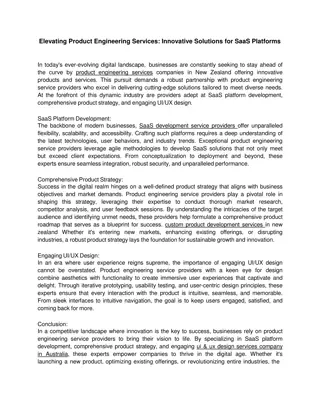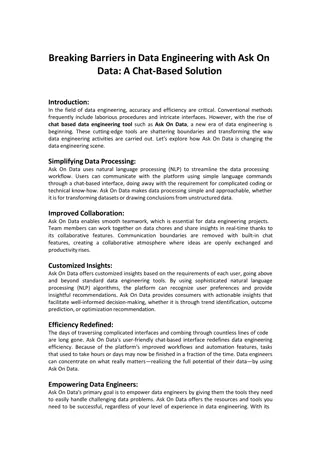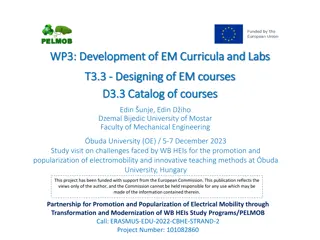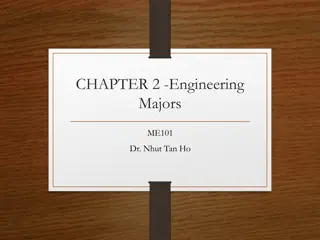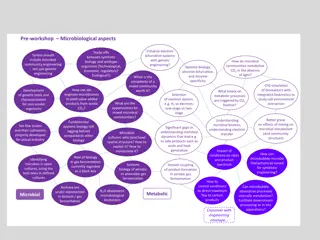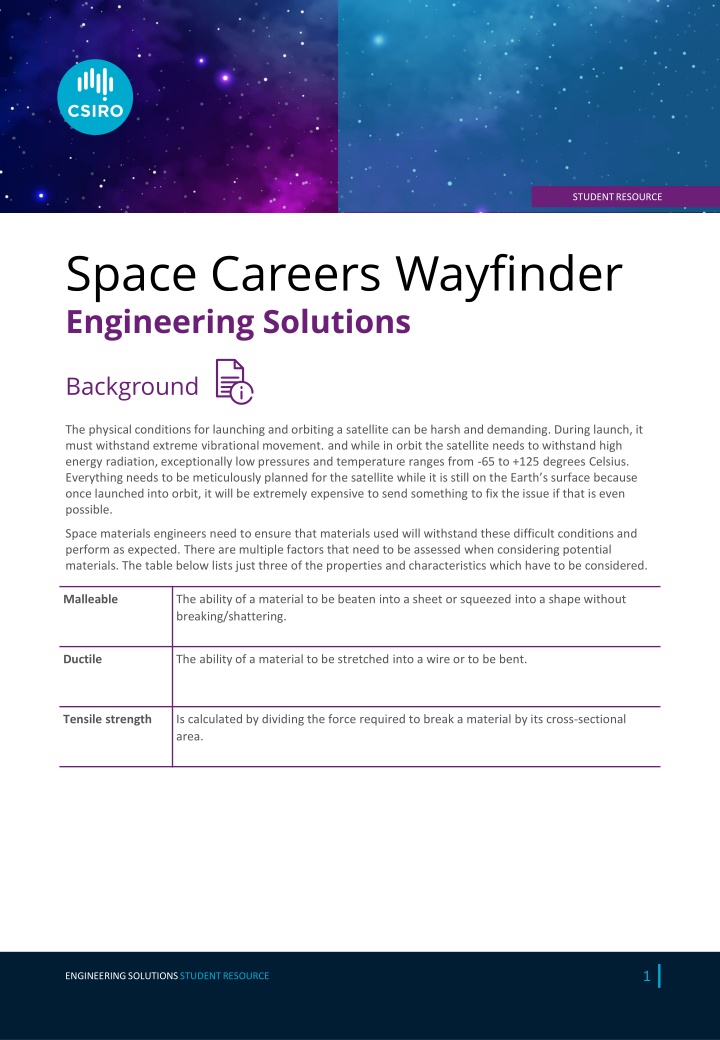
Engineering Solutions in Space Materials Testing
Explore the demanding conditions satellites face in space and how engineers test materials for malleability, ductility, and tensile strength. Engage in an experiment with gummy snakes to understand the effects of temperature on polymer properties. Discover the meticulous planning required for space missions to ensure satellite durability.
Download Presentation

Please find below an Image/Link to download the presentation.
The content on the website is provided AS IS for your information and personal use only. It may not be sold, licensed, or shared on other websites without obtaining consent from the author. If you encounter any issues during the download, it is possible that the publisher has removed the file from their server.
You are allowed to download the files provided on this website for personal or commercial use, subject to the condition that they are used lawfully. All files are the property of their respective owners.
The content on the website is provided AS IS for your information and personal use only. It may not be sold, licensed, or shared on other websites without obtaining consent from the author.
E N D
Presentation Transcript
STUDENT RESOURCE Space Careers Wayfinder Engineering Solutions Background The physical conditions for launching and orbiting a satellite can be harsh and demanding. During launch, it must withstand extreme vibrational movement. and while in orbit the satellite needs to withstand high energy radiation, exceptionally low pressures and temperature ranges from -65 to +125 degrees Celsius. Everything needs to be meticulously planned for the satellite while it is still on the Earth s surface because once launched into orbit, it will be extremely expensive to send something to fix the issue if that is even possible. Space materials engineers need to ensure that materials used will withstand these difficult conditions and perform as expected. There are multiple factors that need to be assessed when considering potential materials. The table below lists just three of the properties and characteristics which have to be considered. Malleable The ability of a material to be beaten into a sheet or squeezed into a shape without breaking/shattering. Ductile The ability of a material to be stretched into a wire or to be bent. Tensile strength Is calculated by dividing the force required to break a material by its cross-sectional area. 1 ENGINEERING SOLUTIONS STUDENT RESOURCE
The Task To determine the effect of temperature on the tensile strength, ductility and malleability of a material at frozen and warm conditions. Gummy snakes are a type of polymer made from proteins. They display similar properties to most other polymers when subjected to varying temperatures. Your challenge is to determine the effect of temperature on the malleability, ductility and tensile strength of this polymer. The Student Activity Materials required for each lab group: 6 x gummy snakes frozen for a minimum 48 hours. Collect these one at a time only immediately prior to use to prevent them warming up 6 x gummy snakes at room temperature mass carrier (or available alternative such as small sandcastle bucket with handle, sand and digital balance) and masses to allow maximum mass load capacity of at least 500g standard science laboratory equipment e.g., retort stand, boss head, clamp scissors 2 x medium bulldog clips 30 cm rulers approximately 4 cm x 4 cm section of sheet graph paper with mm markings marker pen calculator small hammer or equivalent hard mass for hitting sample optional - spring balance of at least up to 10N (=1 kg) maximum scale. If you have an accurate set, you can replace the use of any weight calculations and associated mass carrier and mass related equipment and use the numerical figures directly using the Newtons scale optional - student own phone camera if allowed in class. User must maintain dry hands and their own duty of care of their own device The following three tests should be performed separately on both the cold and warm samples while wearing safety glasses. 2 ENGINEERING SOLUTIONS STUDENT RESOURCE
Malleability The ability to be beaten or rolled into sheets. 1. Collect the frozen sample. 2. Place it onto a solid surface like concrete NOTE Protect any surface likely to be marked or damaged before commencing the activity. 3. While keeping all fingers away from the sample for safety, give it a tap with the hammer by allowing it to do a guided drop from a height of 15 cm while holding onto the end of the handle with your other hand. 4. Write a description of what happens to the sample and dispose it into the bin. 5. Repeat steps 1 4 6. Collect two room temperature samples and warm these by using the warmth from your hands for one minute. This is how you will make the warmed samples for all further testing. 7. Repeat steps 2 - 4 with both warmed samples. 8. Using your understanding of the definition of malleability in the table, what can you infer about the effect of temperature on the malleability of a substance? Photo credit: https://foto.wuestenigel.com/wp-content/uploads/api/aluminum-foil-close-up.jpeg https://foto.wuestenigel.com/wp-content/uploads/api/aluminum-foil-close-up.jpeg 3 ENGINEERING SOLUTIONS STUDENT RESOURCE
Ductility The ability to be drawn into a wire or to be bent. The ability to be drawn into a wire or to be bent. Ductility does not have units, but it is a ratio calculated by dividing the final length of stretching by the original length section that is being tested. The larger the ratio, the greater the ductility. The lowest ratio possible is a value of 1, where the initial and final lengths are the same. That is, where no discernible stretching occurred. Use the top flat surface of a table/bench, near a straight edge for easy measurements of length. 1. Collect the frozen sample. 2. Use the force of a pressing thumb to clamp the head of the snake near the table edge. The force need only be firm and steady, but not so hard as to decapitate the head. 3. Place a ruler along the table edge with the zero mark at the clamping point. Ignore measuring the part of the head under the thumb. Do not try to bend it to align it along the ruler. Just place it so the longest resting length is visible next to the ruler. 4. Record the length from the clamping point to the tail. This is called the resting length. 5. Using your index finger and thumb, grab a point 2 cm from the bottom of the tail. Then slowly and gently stretch the sample along the ruler edge with group members watching the tip of the tail and continually verbalising the total length of the sample every half centimetre length. If possible, this could be recorded by a group member using a phone video ensuring that the sample and ruler are clearly focused. Playback would allow accurate recording of the length before breaking. If so, skip step 6. 6. Continue until it snaps and record the last said length before it snapped. 7. Calculate the ductility ratio as a single number to two decimal places, by dividing the final length recorded (before snapping) by the resting length. 8. Repeat this once more and calculate an average ratio of ductility for the frozen samples. 9. Repeat steps 2 8 but using the warmed samples. 10. Using your understanding of the definition of ductility in the table, what can you infer about the effect of temperature on the ductility of a substance? Photo credit: https://mindsetsonline.co.uk/shop/metal-wires-by-the-reel/ https://mindsetsonline.co.uk/shop/metal-wires-by-the-reel/ 4 ENGINEERING SOLUTIONS STUDENT RESOURCE
Tensile strength The ability to resist a force of stretching until breaking. 1. Collect the frozen sample. 2. Suspend the sample vertically by using the retort stand, boss head, clamp and bulldog clip, with the tail dangling downwards. 3. Bulldog clip the mass carrier (or bucket handle) with the bottom of the clip two centimetres from the tail of the snake. Ensure you can add masses after clipping. Note If using the bucket and sand option. To prevent spillage and the bucket breaking, when sand is being added and when the sample breaks, a team member should be ready to catch the bucket by the handle. The mass can be determined using the digital balance. 4. Gradually add masses of 25 - 50 g increments until it continues stretching of its own accord to breaking. Record the total mass the sample was able to support before breaking. If it supports more than your maximum load, then record it with a greater than (>) symbol. E.g., If your maximum load is 500g, then record as >500g and for any further calculations using this figure, use the > symbol instead of the = symbol. 5. Calculate the weight by using the following formula Where W = W = M = g mg Weight in Newtons (N) mass in kilograms (kg) acceleration due to Earth s gravity 9.8m/s2 Photo credit: = = https://www.tec-science.com/material-science/material-testing/tensile-test/ https://www.tec- science.com/material- science/material- testing/tensile-test/ https://www.tec-science.com/material-science/material-testing/tensile-test/ https://www.tec-science.com/material-science/material-testing/tensile-test/ 6. Repeat steps 1 5 https://www.tec-science.com/material-science/material-testing/tensile-test/ 7. Repeat steps 2 5 twice using the warmed samples You will use the following method once to find the approximate cross-sectional area (m2) by: Use the scissors to make a sharp cut about halfway between the head and the tail Use the marker pen to colour in the cut surface of both exposed cut ends Stamp each end fully within a different 1 cm2 box on the graph paper The important part of the print is the external outline. After printing, use a pencil to shade the interior part of the shape Knowing that 1 cm2 = 100 mm2, estimate the shaded area in mm2 and then convert this to a figure in m2. Hint This is an area, not a length. How many mm2 are in 1 m2? 8. 9. Calculate the tensile strength using the following formula Where FT = FT = W = A = W A Tensile strength (N/m2) Weight in Newtons (N) cross-sectional area (m2) 10. Using your understanding of the definition of tensile strength in the table, what can you infer about the effect of temperature on the tensile strength of a substance? 5 ENGINEERING SOLUTIONS STUDENT RESOURCE
Make an overall summary statement of how temperature affects each of the three properties tested. Research task Composite materials are formed by combining two or more varied materials. Composite have a number of benefits over traditional materials Research composite materials used in satellites and the useful properties of each of these materials. Tabulate your findings. 6 ENGINEERING SOLUTIONS STUDENT RESOURCE SPACE CAREERS WAYFINDER IS A COLLABORATION BETWEEN THE CSIRO AND THE AUSTRALIAN NATIONAL UNIVERSITY





